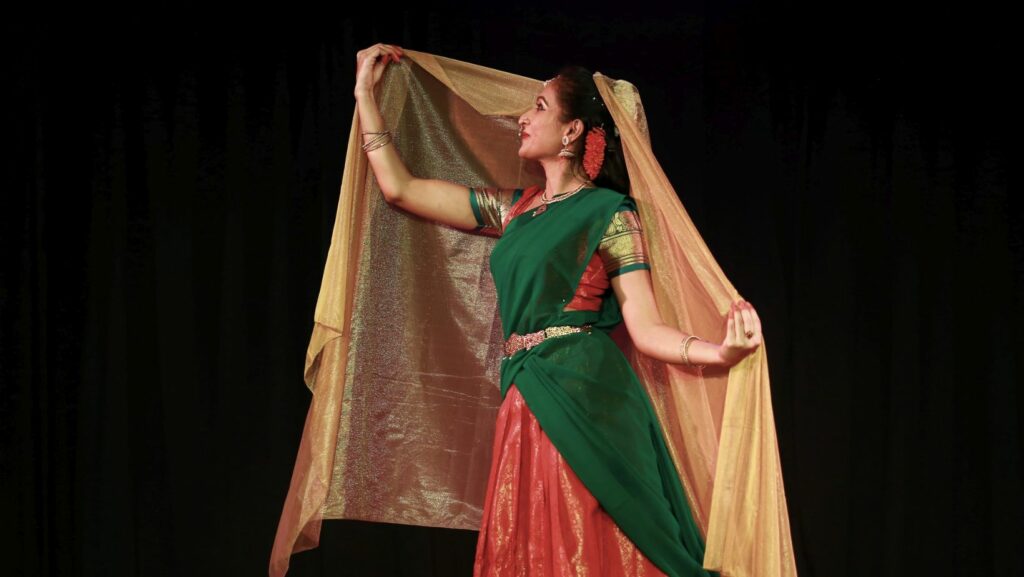Key Takeaways
- Evolution of Storytelling: Telugu cinema has shifted from traditional narratives to diverse and modern storytelling, reflecting cultural changes and audience demands.
- Digital Streaming Impact: Platforms like Amazon Prime Video and Aha have transformed film distribution, promoting on-demand content and changing viewer engagement dynamics.
- Strong Female Representation: Increasingly, films feature powerful female leads, addressing contemporary societal issues and enhancing narrative depth.
- Genre Experimentation: Filmmakers are exploring various genres, such as horror and thriller, which attracts a wider audience and encourages innovative storytelling techniques.
- Global Collaborations: International partnerships uplift production quality, expand audience reach, and enhance recognition for films like “”Baahubali”” and “”RRR.””
- Audience Engagement: Social media has enabled direct communication between filmmakers and audiences, influencing marketing strategies and fostering a sense of community.
Telugu cinema has evolved dramatically over the years, reflecting cultural shifts and audience preferences. From traditional storytelling to modern narratives, filmmakers are pushing boundaries and redefining what it means to create engaging content. This vibrant industry is not just about entertainment; it’s a mirror to society, capturing the essence of contemporary issues while celebrating its rich heritage. In recent years, trends like digital streaming, experimental genres, and strong female leads have gained momentum. These changes highlight the industry’s adaptability and its commitment to resonating with a global audience. As Telugu cinema continues to grow, it’s essential to explore these trends and understand their impact on both filmmakers and viewers alike.
Telugu Cinema Trends
 Telugu cinema demonstrates significant trends that shape its evolution. Filmmakers increasingly focus on diverse narratives, venturing into genres like horror, thriller, and period dramas. This diversification attracts varied audiences and encourages fresh storytelling techniques. Digital streaming platforms play a crucial role in transforming distribution methods. Films like “”Arjun Suravaram”” and “”Ee. maa. Yau”” gained prominence via platforms such as Amazon Prime Video and Aha, reflecting shifting viewer preferences toward on-demand content. Strong female leads emerge as central figures in numerous films. Characters portrayed by actors like Samantha Ruth Prabhu and Nithya Menen deliver powerful performances, often reflecting contemporary societal issues. This trend not only empowers women but enhances story depth, resonating with audiences. Collaborations with international talent also mark a notable trend. Projects such as “”Baahubali”” and “”RRR”” showcase high production values, merging local narratives with global appeal. This collaboration broadens the audience base and elevates industry standards. Telugu cinema continually adapts to market dynamics, embracing new genres, strong character arcs, and innovative distribution methodologies. This adaptability enhances its relevance, engages a wider audience, and reflects the industry’s commitment to evolving storytelling.
Telugu cinema demonstrates significant trends that shape its evolution. Filmmakers increasingly focus on diverse narratives, venturing into genres like horror, thriller, and period dramas. This diversification attracts varied audiences and encourages fresh storytelling techniques. Digital streaming platforms play a crucial role in transforming distribution methods. Films like “”Arjun Suravaram”” and “”Ee. maa. Yau”” gained prominence via platforms such as Amazon Prime Video and Aha, reflecting shifting viewer preferences toward on-demand content. Strong female leads emerge as central figures in numerous films. Characters portrayed by actors like Samantha Ruth Prabhu and Nithya Menen deliver powerful performances, often reflecting contemporary societal issues. This trend not only empowers women but enhances story depth, resonating with audiences. Collaborations with international talent also mark a notable trend. Projects such as “”Baahubali”” and “”RRR”” showcase high production values, merging local narratives with global appeal. This collaboration broadens the audience base and elevates industry standards. Telugu cinema continually adapts to market dynamics, embracing new genres, strong character arcs, and innovative distribution methodologies. This adaptability enhances its relevance, engages a wider audience, and reflects the industry’s commitment to evolving storytelling.
Historical Context
Telugu cinema has a rich history that mirrors the cultural evolution of its audience. Understanding its historical context provides insights into the trends shaping the industry today.
Evolution of Telugu Cinema
Telugu cinema originated in the early 20th century with the first silent film, “”Bhishma Pratigna,”” produced in 1921. The industry quickly transitioned to sound films, with “”Malli Talli”” (1934) marking this significant change. Post-independence, films tackled social issues and reflected the values of the time, gaining popularity among audiences.
In the 1980s and 1990s, filmmakers began incorporating elements from different styles, resulting in hybrid genres. The 21st century saw the emergence of digital filmmaking, enhancing production quality and storytelling techniques. Filmmakers increasingly embraced technology, moving toward innovative narratives and audience engagement.
Milestones in Telugu Film History
Key milestones in Telugu film history reflect significant shifts in the industry:
| Year | Milestone |
|---|---|
| 1921 | “”Bhishma Pratigna”” – First silent film |
| 1934 | “”Malli Talli”” – First sound film |
| 1956 | “”Maaya bazaar”” – Classic film |
| 1980 | “”Shiva”” – Birth of the action genre |
| 1992 | “”Rajanna”” – Notable for historical drama |
| 2003 | “”Magadheera”” – Technological advancement |
| 2020 | “”Arjun Suravaram”” & “”Ee. maa. Yau”” – Streaming success |
These milestones underscore the industry’s transition from traditional storytelling to contemporary practices, highlighting how Telugu cinema has adapted and evolved over the decades.
Current Trends in Telugu Cinema
Telugu cinema continues to evolve, reflecting a dynamic landscape shaped by modern influences. Key trends reveal how filmmakers adapt to changing viewer preferences and technological advancements.
Rise of Digital Platforms
Digital platforms significantly impact Telugu cinema, transforming how films reach audiences. Streaming services like Amazon Prime Video and Aha facilitate immediate access to a diverse array of content, widening market reach. Notable successes include titles like “”Arjun Suravaram”” and “”Ee. maa. Yau,”” which gained traction through online distribution. This new model encourages filmmakers to produce shorter, more focused narratives that cater to fast-paced viewing habits, enhancing audience engagement.
Experimentation with Genres
Filmmakers in Telugu cinema show a marked increase in genre experimentation, branching into areas such as horror, thriller, and period drama. This exploration enhances storytelling depth and attracts diverse audience segments. Innovative films like “”HIT”” and “”Eega”” illustrate creative approaches that blend genres and challenge traditional norms. By pushing boundaries, creators engage viewers looking for fresh content and dynamic narratives.
horror, thriller, and period drama. This exploration enhances storytelling depth and attracts diverse audience segments. Innovative films like “”HIT”” and “”Eega”” illustrate creative approaches that blend genres and challenge traditional norms. By pushing boundaries, creators engage viewers looking for fresh content and dynamic narratives.
Focus on Regional Stories
A growing emphasis on regional stories characterizes contemporary Telugu cinema. Productions increasingly highlight local cultures, traditions, and issues, resonating with audiences across various demographics. Films like “”Jersey”” and “”Kaatru Veliyidai”” reflect authentic regional experiences, fostering a deeper connection with viewers. This trend not only enriches the narrative landscape but also strengthens the cultural identity depicted in films.
Impact of Globalization
Globalization significantly influences Telugu cinema by fostering international collaborations and introducing new cinematic techniques. This impact reshapes storytelling and filmmaking approaches, appealing to broader audiences.
International Collaborations
International collaborations enhance production quality and storytelling in Telugu cinema. Projects like “”Baahubali”” and “”RRR”” exemplify partnerships with global talent, including technicians and actors from diverse backgrounds. Such collaborations elevate cinematic standards, achieving noteworthy box office success and generating international acclaim. The involvement of globally recognized professionals expands the audience reach, as seen with films gaining recognition at prestigious film festivals and awards.
Influence of Western Cinematic Techniques
Western cinematic techniques increasingly shape Telugu filmmaking, enriching narratives and production values. Filmmakers adopt advanced technologies such as CGI, VFX, and innovative editing methods. The integration of these techniques results in visually stunning narratives that resonate with viewers. Additionally, storytelling structures inspired by Hollywood influence create more dynamic and engaging plots. With elements like non-linear storytelling and character-driven narratives, Telugu films attract a wider audience, bridging cultural divides and enhancing the overall cinematic experience.
Audience Engagement
Audience engagement plays a crucial role in shaping Telugu cinema. Filmmakers increasingly acknowledge the significance of connecting with audiences to ensure sustained interest and relevance.
Social Media and Fan Interactions
Social media has transformed how audiences interact with Telugu cinema. Platforms like Twitter, Instagram, and Facebook facilitate direct communication between fans and filmmakers. This interaction influences marketing strategies, where teasers and trailers generate excitement before releases. Live Q&A sessions and behind-the-scenes content foster community engagement. Film promotions, driven by social media trends, often see hashtags trending, boosting visibility. Additionally, polling fans on potential plot points or casting choices creates a sense of inclusivity, further deepening viewer attachment. Telugu cinema stands at a fascinating crossroads of tradition and modernity. Its ability to adapt to changing audience preferences while embracing innovative storytelling techniques showcases the industry’s resilience. The rise of digital platforms and diverse narratives has not only expanded its reach but also enriched its cultural fabric. As filmmakers continue to explore new genres and themes, the emphasis on strong female leads and regional stories adds depth and relevance. This evolution reflects a broader trend in global cinema where collaboration and audience engagement play pivotal roles. The future of Telugu cinema looks promising as it navigates these trends, ensuring that it remains a vibrant and influential part of the cinematic landscape.



